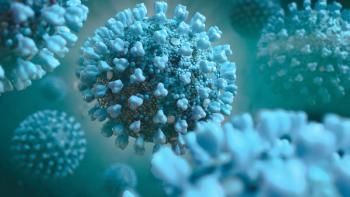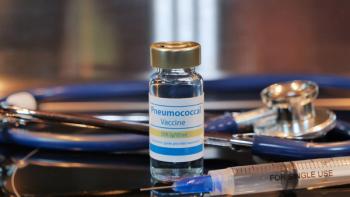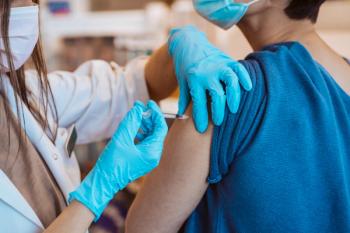
- Drug Topics May 2021
- Volume 165
- Issue 5
COVID-19 Vaccines: A Focus on Safety
Ease patients’ concerns by being well versed in the safety profiles of each vaccine.
Back in December 2020, the FDA issued an emergency use authorization for Pfizer-BioNTech’s COVID-19 vaccine, followed by authorization for the Moderna and Janssen (Johnson & Johnson) vaccines. Many Americans have yet to be vac- cinated, with the most common reasons for refusing being fear of potential adverse effects (AEs) and concerns about the rapid vaccine development process.1 Pharmacists must be familiar with the safety profiles of the vaccines to assure the public of their safety.
COVID-19 Vaccines Available in the United States
Three vaccines are currently available on the US market. The Pfizer and Moderna vaccines are both messenger RNA (mRNA) vaccines, whereas the Janssen is a viral-vector vaccine.2 All 3 result in the production of SARS-CoV-2 spike proteins, which trigger the development of antibodies. The development of immunity and memory cells typically takes a few weeks and, when complete, these protect the body against COVID-19 infections.3 Although the vaccines stimulate an immune response, they do not cause a full COVID-19 infection.
Vaccine Safety Monitoring
Before a vaccine receives FDA approval, it undergoes a series of trials during which its efficacy and safety profiles are established. Trials begin in animal models and continue with 3 phases of clinical trials. A vaccine gains FDA approval only if the efficacy and safety data prove that its benefits outweigh the risks. Once a vaccine has been approved and launched, postmarketing surveillance begins. Such surveillance allows for the collection of safety data in a larger and more diverse population.
Postmarketing safety information for COVID-19 vaccines has been gathered in several ways. For all vaccines, the FDA’s Center for Biologics Evaluation and Research monitors vaccine safety through passive and active surveillance.2 Passive surveillance consists of adverse event reports received from the public and health care professionals, which are entered into the Vaccine Adverse Event Reporting System. Active surveillance involves proactively obtaining and analyzing information from large health care data systems to verify safety signals identified through passive surveillance or to detect additional safety signals. If a possible link between a vaccine and an AE is identified, public health officials assess the benefits and risks and determine whether the vaccine can continue to be administered and whether administration guidelines require adjustment.4
Reported Adverse Effects Associated With COVID-19 Vaccines
The AEs reported with the COVID-19 vaccines are generally mild and resolve within a few days.5 These effects tend to be more intense after the second dose of the mRNA vaccines and are more likely to occur in younger individuals. Ongoing surveillance has identified additional AEs, but it is not always possible to reliably estimate their frequency or establish a causal relationship to vaccine exposure (see Table).6-8 This point can be illustrated by the reporting in mid-April 2021 of a few cases of thrombocytopenia with cerebral venous sinus thrombosis in individuals who had received the Janssen COVID-19 vaccine. Although these cases appear to be very rare, as of the time of this writing, the FDA and CDC have recommended a pause in the use of this vaccine until this matter is thoroughly investigated.9
The more commonly reported AEs associated with the use of COVID-19 vaccines are usually related to the vaccine’s pharmacology and not considered immune-mediated or allergic reactions.10 Despite that, news reports concerning severe postmarketing reactions including anaphylaxis instilled fear among the public.11
Anaphylaxis
Anaphylaxis is a severe acute-onset immunologic reaction, generally immunoglobulin E (IgE) mediated, which typically occurs in response to preformed IgE antibodies.12 Acute-onset immunologically mediated reactions commonly manifest as urticaria, swelling, gastrointestinal upset, respiratory distress, or cardiovascular collapse associated with severe cases of anaphylaxis. The onset of acute allergic reactions generally occurs within 30 minutes of exposure, although a reaction may also develop hours to days later, in which case it usually presents as a cutaneous reaction. Generally, the mRNA, DNA, or other antigen components in vaccines are not the culprits for allergic reactions. Allergic reactions are usually attributed to other product components such as stabilizing agents and adjuvants, and, rarely, to latex in the vial’s rubber stopper. The Pfizer and Moderna COVID-19 vaccines contain mRNA, lipids, polyethylene glycol (PEG) 2000, electrolytes, sucrose, and a saline diluent. Although the etiology of anaphylaxis to the COVID-19 vaccines is not known, PEG and related polysorbates have been associated with cases of anaphylaxis to other agents. Individuals who exhibit signs of allergic reaction after COVID-19 vaccination are advised to avoid new PEG exposure and to undergo further evaluation with a board-certified allergist or immunologist.12 Although cases of anaphylaxis were not reported in clinical trials with the mRNA vaccines, 21 incidents of possible anaphylaxis were subsequently reported with the Pfizer vaccine (11.1 cases per million doses), with 70% occurring within 15 minutes of administration.12 Ten cases of possible anaphylaxis were reported after vaccination with the Moderna vaccine (2.5 cases per million doses) and 1 case of anaphylaxis was reported with the Janssen vaccine.11 The less extensive use of the Janssen vaccine to date prohibits a comparative assessment of the overall safety of this vaccine relative to the mRNA vaccines.
Prevention and Management of Anaphylaxis
The CDC recommends that the COVID-19 vaccines not be administered to individuals who have a history of severe or immediate allergic reaction to any vaccine component (eg, PEG in the case of the mRNA vaccines, polysorbate in the case of the Janssen vaccine).13 Patients who experienced a severe or immediate allergic reaction to a COVID-19 vaccine should not receive subsequent doses.14 The CDC recommends a postvaccination observation period of 30 minutes for those at high risk for anaphylactic reactions and 15 minutes for all other individuals.14
Counseling and Education
When providing counseling, it is important to emphasize the vaccine’s efficacy. Individuals receiving the mRNA vaccines also should be counseled on the importance of completing the vaccination series with the same product. They should be counseled on the expected postvaccination symptoms: Of those receiving the mRNA vaccines, local symptoms are experienced by 80% to 89%, and systemic symptoms by 55% to 83%; of those receiving the viral-vector vaccine, local symptoms are experienced by 50%, and systemic symptoms by 55%. Reassure recipients that systemic postvaccination symptoms are generally mild to moderate in severity, occur within the first 3 days of vaccination, and resolve within 3 days of onset. Advise recipients that antipyretic or analgesic medications can be taken for postvaccination local or systemic symptoms.14
The available COVID-19 vaccines are effective in reducing the spread of the disease. Serious reactions are rare, and the public should be educated on the overall safety of these vaccines.
References
1. WHO coronavirus (COVID-19) dashboard. World Health Organization. Updated April 6, 2021. Accessed April 6, 2021.
2. Nguyen KH, Srivastav A, Razzaghi H. COVID-19 vaccination intent, perceptions, and reasons for not vaccinating among groups prioritized for early vaccination–United States, September and December 2020. MMWR Morb Mortal Wkly Rep. 2021;70(6):217-222. doi:10.15585/mmwr.mm7006e3
3. Understanding how COVID-19 vaccines work. CDC. Updated March 9, 2021. Accessed April 1, 2021.
4. COVID-19 vaccine safety surveillance. Food & Drug Administration. Updated February 9, 2021. Accessed April 1, 2021.
5. Ensuring the safety of vaccines in the United States. CDC. Updated January 2018. Accessed April 1, 2021.
6. Possible side effects after getting a COVID-19 vaccine. CDC. Updated March 16, 2021. Accessed April 2, 2021.
7. Pfizer-BioNTech COVID-19 Vaccine- bnt162b2 injection, suspension. DailyMed. Updated February 26, 2021. Accessed April 1, 2021.
8. Moderna COVID-19 Vaccine- cx-024414 injection, suspension. DailyMed. Updated March 29, 2021. Accessed April 1, 2021.
9. Janssen COVID-19 Vaccine- ad26.cov2.s injection, suspension. DailyMed. Updated April 2, 2021. Accessed April 6, 2021.
10. Recommendation to pause use of Johnson & Johnson’s Janssen COVID-19 vaccine. Centers for Disease Control and Prevention website. Accessed April 15, 2021.
11. Kuder MM, Lang DM, Patadia DD. Anaphylaxis to vaccinations: a review of the literature and evaluation of the COVID-19 mRNA vaccinations. Cleve Clin J Med. Published online March 1, 2021. doi:10.3949/ccjm.88a.ccc075
12. Rolla G, Brussino L, Badiu I. Maintaining safety with SARS-CoV-2 vaccines. N Engl J Med. 2021;384(10):e37. doi:10.1056/NEJMc2100766
13. Information about COVID-19 vaccines for people with allergies. CDC. Updated March 25, 2021. Accessed April 5, 2021.
14. Interim clinical considerations for use of COVID-19 vaccines currently authorized in the United States. CDC. Last reviewed March 5, 2021. Accessed April 5, 2021.
Articles in this issue
over 4 years ago
May Is Mental Health Awareness Monthover 4 years ago
Technology Advances Are Needed to Advance the Professionover 4 years ago
Integrating Pharmacists Into Stroke Care Teamsover 4 years ago
Rheumatoid Arthritis Treatmentover 4 years ago
Digital Health Tools in Diabetesover 4 years ago
Emerging Roles in Mental Health Care for PharmacistsNewsletter
Pharmacy practice is always changing. Stay ahead of the curve with the Drug Topics newsletter and get the latest drug information, industry trends, and patient care tips.




















































































































































